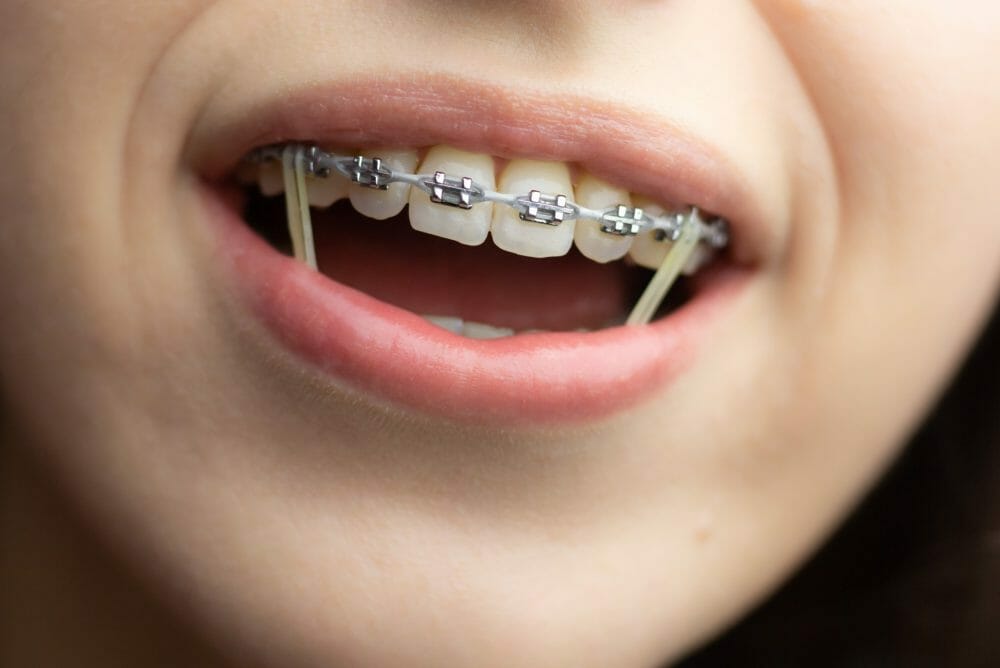Welcome to the world of orthodontic treatment, where tiny rubber bands play a big role in transforming smiles! At Dischinger Orthodontics, we understand that every aspect of your orthodontic journey, no matter how small, contributes to achieving that perfect smile you’ve always dreamed of. In this article, we’re going to delve into the fascinating world of rubber bands in orthodontic treatment, shedding light on their importance, function, and how they contribute to your overall treatment success.
Orthodontic treatment, including the use of braces, is a journey, and rubber bands are a crucial part of that journey. Whether you’re just beginning your treatment or you’ve been wearing braces for a while, understanding the role of rubber bands can help you make the most of your orthodontic experience. So, let’s dive in and explore everything you need to know about rubber bands in orthodontic treatment!
Understanding Rubber Bands in Orthodontic Treatment
Rubber bands, also known as elastics, are small, stretchy loops made of medical-grade latex or synthetic materials. While they may seem insignificant compared to the brackets and wires of braces, rubber bands play a crucial role in aligning your teeth and correcting your bite.
These tiny elastics are often attached to brackets on your upper and lower teeth, creating a force that helps move your teeth into their proper positions. The placement of rubber bands varies depending on your specific orthodontic needs and treatment plan.
The primary function of rubber bands is to apply pressure in specific directions, guiding your teeth into alignment and correcting bite issues such as overbites, underbites, and crossbites. By working in conjunction with the braces, rubber bands help ensure that your teeth move into their desired positions gradually and effectively.
Rubber bands come in different sizes, strengths, and colors, allowing for customization to meet individual treatment needs and patient preferences. Your orthodontist will provide you with detailed instructions on how to wear your rubber bands, including when to change them and how often to wear them throughout the day.
It’s essential to follow your orthodontist’s instructions carefully when wearing rubber bands to ensure the best results. Consistent and proper wear of rubber bands is crucial for achieving optimal tooth movement and bite correction.
In addition to aligning your teeth and correcting your bite, rubber bands also play a role in stabilizing your jaw position and improving overall facial aesthetics. By working with your braces, rubber bands help create a harmonious balance between your teeth, jaw, and facial features, resulting in a more balanced and attractive smile.
We understand the importance of rubber bands in orthodontic treatment and their significant impact on achieving optimal results for our patients. That’s why we take the time to educate our patients about the role of rubber bands and provide personalized guidance to ensure they get the most out of their orthodontic experience.
How Rubber Bands Are Used in Braces
Rubber bands, often referred to as elastics, are a vital component of braces treatment, contributing to the overall effectiveness of orthodontic correction. They are strategically placed on the brackets of your braces to exert specific forces that guide your teeth into their desired positions.
Here’s how rubber bands are typically used in braces treatment:
Correcting Bite Alignment: Rubber bands are commonly employed to address bite alignment issues such as overbites, underbites, and crossbites. Depending on your specific orthodontic needs, your orthodontist may attach rubber bands in various configurations to apply targeted pressure to specific teeth and jaw positions.
Aligning Teeth: Rubber bands work in conjunction with the wires and brackets of your braces to facilitate tooth movement. They help align crooked or misaligned teeth by applying gentle yet consistent pressure, gradually guiding them into proper alignment over time.
Closing Gaps: In some cases, rubber bands are used to close gaps between teeth by pulling them closer together. By attaching rubber bands to brackets on adjacent teeth, orthodontists can effectively reduce the space between teeth, resulting in a more uniform and aesthetically pleasing smile.
Enhancing Jaw Alignment: Rubber bands can also be utilized to improve jaw alignment and coordination. By connecting brackets on the upper and lower teeth, rubber bands help align the jaws and promote proper bite function. This can alleviate discomfort associated with misaligned jaws and improve overall oral health.
Providing Customized Treatment: Orthodontists tailor the use of rubber bands to each patient’s unique orthodontic needs and treatment goals. The size, strength, and placement of rubber bands are carefully selected to achieve optimal results while ensuring patient comfort and compliance.
It’s essential to follow your orthodontist’s instructions regarding the use of rubber bands diligently. Consistent wear and proper placement of rubber bands are crucial for achieving the desired tooth movement and bite correction outcomes. Failure to wear rubber bands as directed can prolong treatment time and compromise treatment results.
We prioritize patient education and empowerment, ensuring that our patients understand the role of rubber bands in their braces treatment. We provide comprehensive instructions on how to wear and care for rubber bands, empowering patients to actively participate in their orthodontic journey and achieve a beautiful, healthy smile.
Addressing Common Concerns and Questions
As with any aspect of orthodontic treatment, patients may have questions or concerns regarding the use of rubber bands with braces. Here, we address some of the most common queries to provide clarity and alleviate any apprehensions:
Do rubber bands hurt?
Rubber bands typically exert gentle pressure on the teeth and jaws, which may cause slight discomfort initially. However, any discomfort should subside as you become accustomed to wearing them. If you experience persistent pain or irritation, consult your orthodontist for adjustments.
How often should I wear rubber bands?
Your orthodontist will provide specific instructions regarding the wearing schedule for rubber bands. In most cases, rubber bands should be worn consistently, typically 24 hours a day, unless otherwise instructed. Removing rubber bands frequently or wearing them inconsistently can disrupt treatment progress.
Can I change my rubber bands myself?
It’s essential to follow your orthodontist’s guidance regarding the placement and removal of rubber bands. Attempting to change rubber bands yourself may result in improper positioning or inadequate pressure, compromising treatment effectiveness. Always consult your orthodontist if you have concerns or require adjustments.
What if I forget to wear my rubber bands?
Consistent wear of rubber bands is crucial for achieving desired treatment outcomes. If you forget to wear your rubber bands for an extended period, contact your orthodontist as soon as possible. They may provide guidance on how to resume wearing them effectively without disrupting treatment progress.
Are there different types of rubber bands?
Orthodontic rubber bands come in various sizes, strengths, and configurations to accommodate different treatment needs. Your orthodontist will select the appropriate type of rubber bands based on your individual orthodontic requirements. It’s essential to use the specific rubber bands prescribed by your orthodontist for optimal results.
How long will I need to wear rubber bands?
The duration of rubber band wear varies depending on the complexity of your orthodontic case and treatment goals. Your orthodontist will provide an estimated timeline for wearing rubber bands based on your treatment plan. Consistent wear and adherence to your orthodontist’s instructions are key to achieving timely and successful outcomes.
Can I eat and drink with rubber bands in?
It’s generally recommended to remove rubber bands while eating or drinking, as food particles and beverages may damage or dislodge them. Always remove your rubber bands before consuming meals or snacks, and remember to reapply them afterward. Maintaining good oral hygiene practices is essential to prevent dental issues during braces treatment.
We understand that patients may have questions or concerns about incorporating rubber bands into their braces treatment. Our knowledgeable orthodontic team is here to provide personalized guidance and support, ensuring that patients feel confident and informed throughout their orthodontic journey. By addressing common concerns and questions proactively, we empower our patients to achieve optimal results and enjoy a beautiful, healthy smile.
Conclusion
Rubber bands play a crucial role in orthodontic treatment, assisting in the alignment of teeth and the correction of bite issues. Understanding how rubber bands work and their importance in braces treatment can help patients navigate their orthodontic journey with confidence.
At Dischinger Orthodontics, we prioritize patient education and empowerment, ensuring that individuals have the knowledge and resources needed to achieve successful treatment outcomes. Our experienced orthodontic team is dedicated to providing personalized care and support, guiding patients through each stage of their braces journey.
By addressing common concerns and questions surrounding the use of rubber bands, we aim to alleviate any apprehensions and foster a positive treatment experience for our patients. With our expertise and commitment to excellence, we help individuals achieve the smile they’ve always wanted and maintain optimal oral health for years to come.
If you’re considering orthodontic treatment or have questions about rubber bands and braces, we encourage you to schedule a consultation with us at Dischinger Orthodontics. Together, we’ll create a customized treatment plan tailored to your unique needs and goals, ensuring a beautiful, healthy smile that lasts a lifetime.


